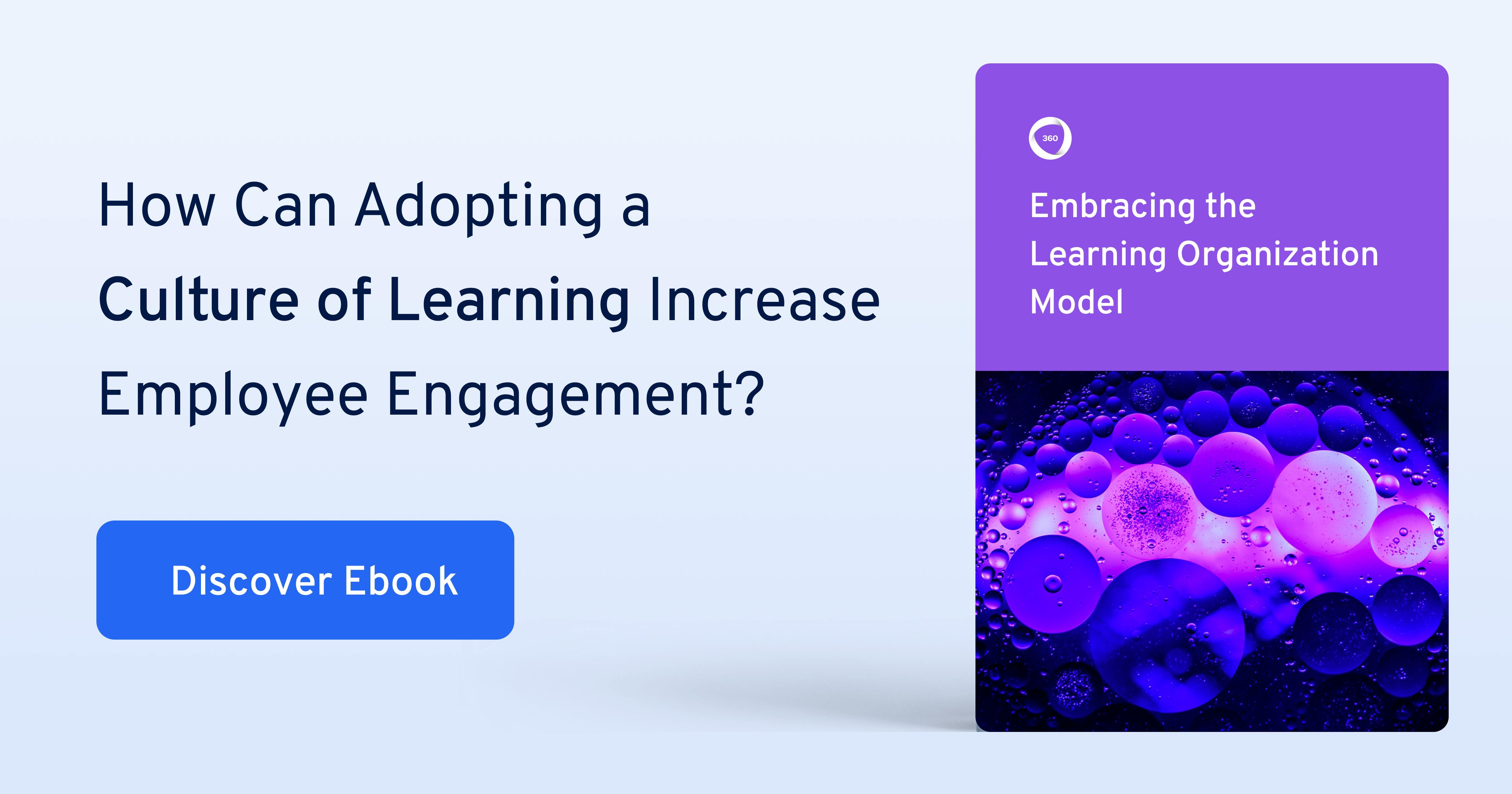As a Learning and Development pro, you know that your learners aren’t all cookie cutter copies of each other. Some will jump at the opportunity to declare a learning need, explain a concept to a peer, or create a course. Others will struggle to get to the halfway point of a lesson.
So, why do some learners seem to thirst for new knowledge, and others are perfectly happy as they are? The answer may lie in humans’ varying ‘need for cognition’ and the different types of curiosity.
In this post, we’ll explore what researchers have discovered about the drive to learn, as well as the different shades of curiosity that motivate us.
We’ll end with how, as an L&D pro, you might use these insights to implement training programs that drive ‘the best’ type of curiosity—or at the very least, to understand where your learners are coming from.
What is the need for cognition?
The need for cognition (NFC) was initially investigated by Arthur Cohen and his colleagues in the 1950s, but fully developed by John Cacioppo and Richard Petty a couple of decades later.
NFC is a personality trait used in psychology to describe how inclined an individual is to seek effortful mental activities like puzzles, complex concepts, or problem-solving. The APA (American Psychological Association) gives a slightly more in-depth description:
“A personality trait reflecting a person’s tendency to enjoy engaging in extensive cognitive activity. This trait primarily reflects a person’s motivation to engage in cognitive activity rather than his or her actual ability to do so. Individuals high in need for cognition tend to develop attitudes or take action based on thoughtful evaluation of information.”
NFC is determined by a self-administered questionnaire, the need for cognition scale. The original was 34 questions long, but researchers shortened it to the popular 18-question version.
Take the test to determine your NFC: The need for cognition scale
Understanding the different needs for cognition within your organization is key to matching people with the right training resources: some learners will prefer content that gives them plenty of chances for reflection and evaluation, whereas others will prefer to move along at pace.
Now that we know not everybody has the same desire for extensive cognitive activity, let’s see how you can adapt your training programs to reflect these different preferences.
Adapting training for your learners’ need for cognition
Those with a high need for cognition will gravitate naturally towards opportunities for intense thinking and problem-solving. They are probably:
- More willing to create courses if sponsored by an L&D
- More open to the iterative process of Collaborative Learning through peer feedback, discussion, and reactions from other learners
- More open to new experiences, and therefore to trying a new training program
- More willing to apply their new knowledge to solve challenging problems
- More likely to engage in metacognition, or ‘thinking about thinking’ (the main trait of Cognitive Learning Theory)
Those with a low need for cognition like things to be straightforward, tend to agree with the established group consensus, and don’t always want to spend a lot of time deliberating or debating an idea.
Those with low need for cognition:
- May need more external motivators to complete a course, such as prompts or group feedback
- Are more susceptible to the halo effect, (associating positive attributes to attractive people, for instance), and other cognitive heuristics
- May tend to follow the herd and agree with other learners, and might not speak up right away if they don’t understand a course
- May not put in as many new ideas when working in a group as they would when working alone
While you may not actually know each individual learner’s NFC, it’s important to be aware of these differences in attitude. Practitioners of adaptive learning might pick up on these cues and adjust learning programs to fit the profile of each employee.
3 types of curiosity
Instead of focusing on the drive to engage in complex thinking, the concept of curiosity centers on why humans—and no other species—are driven to discover the unknown.
Though we may see curiosity as a simple feeling, researchers categorize it in several ways, as Ian Leslie notes in his book, Curious:
- Diversive curiosity.
Diversive curiosity is the fleeting desire to explore novel things. It is the impulse that drives us to endlessly scroll Twitter, flip through People Magazine, or click on a headline, but it doesn’t engage us in deeper exploration. - Empathic curiosity.
Empathic curiosity is the ‘curiosity about the thoughts and feelings of other people.’ This is the curiosity that pushes us to truly empathize with someone and “put ourselves in their shoes.” - Epistemic curiosity.
This is the ideal type of curiosity according to Leslie, and the one we should all be cultivating in ourselves, and in our learners: “Epistemic curiosity represents the deepening of a simple seeking of newness into a directed attempt to build understanding. It’s what happens when diverse curiosity grows up.”
Dr. Litman further splintered epistemic curiosity into two additional types: Intellectual Interest curiosity (type I) and Informational Deprivation curiosity (type D). The former refers to curiosity that drives one ‘to learn something that may be entertaining or amusing,’ while the latter ‘is activated in situations when individuals feel they are lacking information that is considered essential to improving their understanding.’
So, a thirst for totally new, exciting information on the one hand (Intellectual Interest curiosity), and a desire to fill a nagging knowledge gap on the other (Informational Deprivation curiosity).
Though these three curiosity types all push us to discover new things, it is epistemic curiosity that drives meaningful learning, especially in an era where people’s attention is pulled in every direction and deep concentration is a rare commodity.
This central role of epistemic curiosity makes it an area of critical focus for L&D leaders.
How to encourage and reward the three types of curiosity
Ian Leslie argues convincingly in Curious that, as a society, we should be cultivating more epistemic curiosity. L&D teams have a unique chance to do so through designing and delivering the right learning programs.
Harness diversive curiosity for deeper learning
First, see how you can harness diversive curiosity as a jumping off point for deeper learning. At 360Learning, we used ‘Know-vember’ and Women's History Month to promote this initial interest, with five minute long courses designed to expose learners to brand-new subjects.
Some employees may find themselves scrolling through these novel topics in our content library, but they may not yet all have the epistemic curiosity to plumb a course to its depths. If the context is right, find ways to incentivize, promote, or inspire this type of deeper curiosity.
Use empathic curiosity in storytelling
Next, you can harness empathic curiosity in storytelling, or when you ask an employee to share institutional knowledge. A fleeting thought like, “What’s it like to be Sarah the engineer?”, could grow into epistemic curiosity, if nurtured.
For instance, some companies run ‘day in the life training,’ where employees shadow a colleague to get a sense of their mindset, daily tasks, trials and tribulations. This kind of training can improve communication, group work, and efficiency across teams.
Give epistemically curious learners a chance to express themselves
Finally, for those already in an ‘epistemic’ mindset, be sure to give them an opportunity to easily express their curiosity. For instance, Intellectual Interest seekers might browse through a library of content in search of the unknown—so make sure your library has novel, up-to-date material.
Those in Informational Deprivation mode, on the other hand, might outright declare a learning need. Be sure your LMS gives them the ability to do so quickly and easily, and that the request is treated in a timely manner.
Reward learner curiosity: build a Learning Organization
As an L&D leader, understanding the levels of need for cognition, and the different types of curiosity present within your organization, is critical to designing and delivering the right learning experiences to help people grow.
You can’t change somebody’s personality type, but you can guide them through trying new things or leaving their comfort zone. So, reflect on the tips and techniques we’ve discussed in this post, and see how you can put them to use to help all kinds of learners.
And if you’d like to take a look at how implementing a culture of learning can increase employee engagement, check out our ebook, ‘Embracing the Learning Organization Model’.



